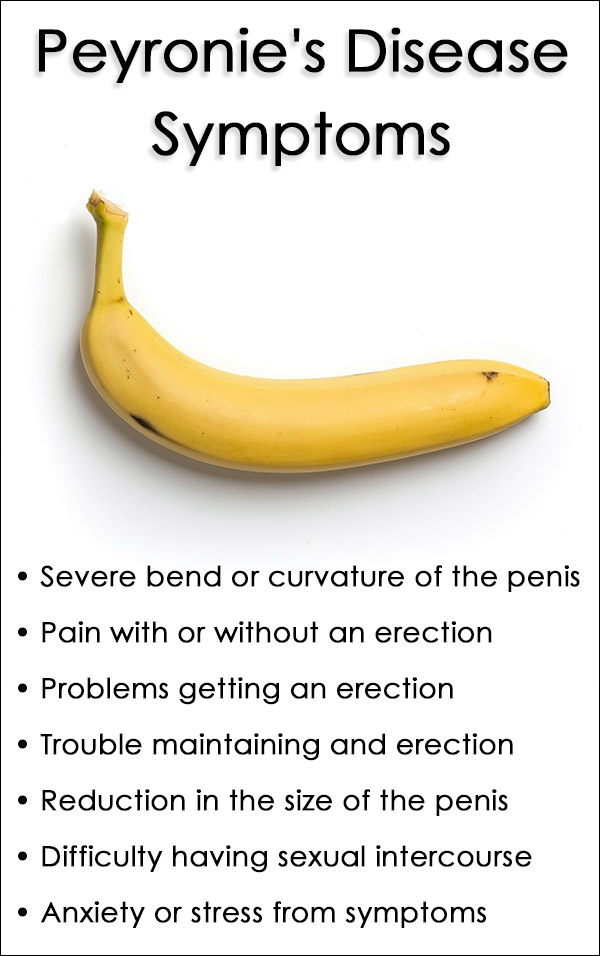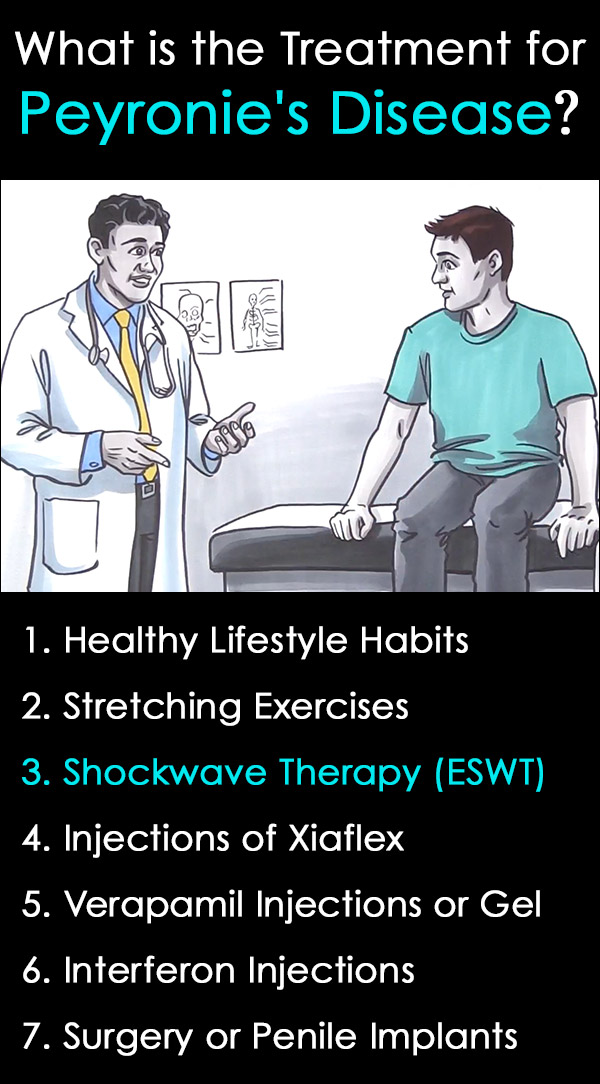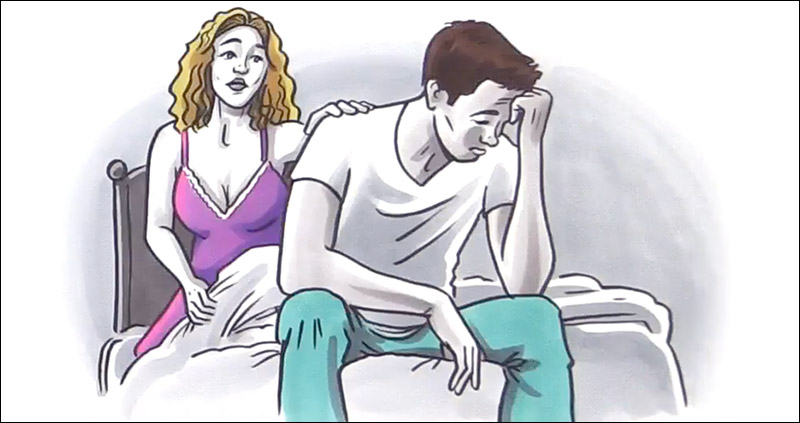Peyronie’s Disease (PD) is a condition that involves painful symptoms, such as curvature or deformity of the penis and difficulty getting an erection. It is a type of erectile dysfunction (ED) that can occur in younger men, but is more common among males in their 50s and 60s.
Like other forms of erectile dysfunction, Peyronie’s Disease can be an incredibly uncomfortable condition for men, not only from experiencing these physical issues, but also when discussing the problem with their partner or seeking medical help.
Regardless of age, this form of ED is likely to cause serious anxiety and stress, though there are Peyronie’s Disease treatment approaches that can keep the condition from worsening and, in other cases, actually improve the symptoms.
What is Peyronie’s Disease (PD)?
Having a slight bend or curve in the penis when it’s erect is not necessarily a cause for concern. In fact, a slight curvature of the penis is fairly common. Peyronie’s disease, however, is something quite different.
With the build up of fibrous scar tissue on the penis, Peyronie’s Disease can lead to a significant curvature, painful erections, difficulty achieving erections, an inability to have sexual intercourse, and even a reduction in penis size.
Unfortunately, the condition is unlikely to go away or get better without treatment and Peyronie’s Disease symptoms can worsen if left unaddressed.
While early treatment for PD is always recommended at the first signs of any issues, men who have suffered with the condition for longer periods of time may still see some improvement and should seek medical care.
Peyronie’s Disease Symptoms
With Peyronie’s, scar tissue is referred to as plaque, though it is not the same kind of plaque that builds up in blood vessels.
Plaque formation, which is the one of the primary Peyronie’s Disease symptoms, can develop on the upper or underside of the penis and can be felt through the skin.
Additionally, the plaque can actually circle the penis, causing an hourglass like appearance. The scar tissue may also calcify, further reducing the elasticity of the penis that often leads to significant discomfort and pain.
Other PD symptoms resulting from the build up of scar tissue include some of the following:
- A severe bend or curvature of the penis
- Pain with or without an erection
- Problems getting or maintaining an erection
- A reduction in the size of the penis
- Difficulty having sexual intercourse as a result of the bend or curvature
- Anxiety and stress that can actually make erectile dysfunction symptoms worse

Peyronie’s Disease Causes
According to the Mayo Clinic, “The cause of Peyronie’s disease isn’t completely understood,” but researchers are aware of several issues that can increase the risk of this condition.
One of the most common Peyronie’s Disease causes is trauma to the penis, either during the course of sex, a sports related injury, or other types of accidents.
If the trauma is significant enough to cause bleeding, this can lead to the buildup of scar tissue. In many cases, though, patients are not aware of any specific trauma, meaning there are possibly other factors that can lead to the disease.
Researchers believe that additional risk factors are likely to be some of the following Peyronie’s Disease causes:
Genetics and Family History
Genetics and family history can sometimes play a role in developing Peyronie’s. Men with other male family members that experience the symptoms are at a greater risk for dealing with it too.
Aging
Aging might increase the risk for having the condition, although males of any age can develop PD.
Connective Tissue Disorders
Men who have connective tissue disorders, such as Dupuytren’s Contracture, may have a greater likelihood for developing the disease.
What is the Treatment for Peyronie’s Disease?
Diagnosis to determine a proper Peyronie’s Disease treatment requires a discussion of symptoms, a physical examination and may also include X-rays or an ultrasound to determine the presence and amount of scar tissue buildup in the penis.
If the symptoms are not severe, some physicians may suggest a cautious treatment approach of waiting to see if symptoms worsen or improve on their own.
Typical Treatment for PD Can Include the Following:
1. Healthy Lifestyle
Developing or maintaining a healthy lifestyle includes avoiding drugs and alcohol, including nicotine, and sustaining a regular exercise routine of at least 30 minutes a day, for 4 or more days a week whenever possible.
In addition to proper restful sleep each night, these may help to reduce the risk of developing Peyronie’s Disease or PD.
2. Stretching Exercises
Various stretching exercises performed several times daily when the penis is not erect are sometimes recommended. These can be used with penile traction devices to assist with the stretching exercises. A doctor or urologist can recommend various types of exercises and devices to use.

3. Shockwave Therapy for Peyronie’s Disease
Shockwave Therapy for Peyronie’s Disease is a non-invasive treatment option that delivers gentle pressures waves to breakdown scar tissue and improve blood flood and circulation to the penis. Both of these are critical for a healthy erection.
Also known as Extracorporeal Shock Wave Therapy (ESWT), this treatment method is virtually painless. Because it’s non-invasive, there’s no anesthesia or downtime related to this type of therapy. It has also shown to be an effective treatment for other erectile dysfunction conditions as well.
4. Injections of Xiaflex
Xiaflex is the only FDA approved medication to treat Peyronie’s Disease in men with erections that bend greater than 30 degrees with an erection. Xiaflex Injections are used to help breakdown the accumulation of collagen in the penis.
5. Verapamil Injections or Gel
Verapamil is a calcium-channel blocker that can increase collagenase activity and also inhibit fibroblast activity in the penis. Verapamil is normally prescribed for high blood pressure, but it is sometimes used as an injection or gel for Peyronie’s Disease.
6. Interferon Injections
It is thought by some clinicians that interferon injections into the penis may help breakup fibrous tissue or reduce pain, but there are some side effects and not a lot of evidence about the effectiveness.
7. Surgery or Penile Implants
Surgery is not usually recommended until all other treatment options have been unsuccessful. There are three options with surgery for Peyronie’s Disease:
- Lengthening the most affected scar-tissue side of the penis, which may increase the chances of erectile dysfunction (ED)
- Shortening the least affected side of the penis
- Penile implants
There is always an inherent risk with surgery, and all options must be discussed with your medical team.
When considering treatment options for Peyronie’s Disease, the first three listed above are all non-invasive and will not produce the side effects associated with the other four that require injections, implants or surgery.






